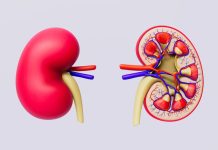
stated that fully vaccinated people could take off their masks.
In hindsight, that recommendation may have backfired, as it came around the same time as the highly contagious delta variant of SARS-CoV-2 arrived on the scene, leading to yet another surge in COVID cases.
The delta variant now accounts for eight in 10 new cases, said Rochelle Walensky, director of the Centers for Disease Control and Prevention, during a briefing in late July.
What does the science say about vaccines and masks, and how do you decide where and when to wear a mask?
The good news is most vaccinated people are protected from the worst outcomes of COVID-19, including hospitalization and death.
However, what changed was the arrival of the delta variant, which is twice as transmissible as the previous variant.
The delta variant continues to rage in the United States, and with only half of the population fully vaccinated, there have been increasing reports of COVID infection in vaccinated people.
These so-called breakthrough cases as usually mild to moderate—much like a cold, with symptoms such as headache, sneezing, runny nose and a sore throat—and are relatively rare.
But a small percentage of a large number is still a lot of people, Walensky said. And these cases could unfortunately spread the virus to others (though most COVID cases are among unvaccinated individuals.)
Where to wear a mask
The CDC now recommends that vaccinated people wear masks indoors in areas with substantial to high amounts of cases. You can check the number of cases in your area using the CDC’s COVID-19 Data Tracker.
If there are a lot of cases in your area, vaccinated people may want to wear a mask indoors to lessen the chance of a mild infection and of spreading it to unvaccinated people (which includes all kids younger than 12) or people with conditions that lower their immunity.
Think of the mask as an added layer of protection.
“I do continue to wear a mask when I am in indoor public spaces where there are a mix of vaccinated and unvaccinated persons especially when if it is likely that unvaccinated persons are unmasked,” said Laraine Washer, M.D., medical director of Infection Control at Michigan Medicine.
Many vaccinated parents and caregivers may choose to wear a mask in public, even in areas with low or moderate virus spread, in solidarity with their children.
And people with certain conditions that weaken the immune system (like cancer) or who take certain immune lowering medications may want to wear a mask in all public settings even if they are vaccinated, despite local case counts.
Talk to your doctor about your specific situation.
The debate over masks for kids
There are no COVID-19 vaccines currently approved for kids under 12, yet many schools had been debating whether to require masks as they prepare for the school year.
The CDC along with the American Academy of Pediatrics now recommend that everyone wear masks in school settings.
“What I am hearing now is that many schools are saying masks optional for the fall, which I find concerning, particularly since it is unclear what we may be dealing with then,” said Amanda Valyko, MPH, CIC, FAPIC.
And masks continue to be recommended indoors for all unvaccinated people, including kids over 2 years old.
The CDC and infection control experts stress that vaccination is the most important way to stop the spread of COVID-19.
The COVID-19 virus is spreading quickly among people who aren’t vaccinated, and the risk of severe illness and death is even higher.
It’s extremely important for people who are not vaccinated to continue to wear a mask in public and help reduce the spread.
It’s impossible to predict what the future will hold, but a key piece to the COVID-19 response has been pivoting and adjusting to the changing pandemic.
While there is substantial transmission in the community, it is prudent for everyone to mask indoors in public, noted Valyko.
“This is critical for those that are not vaccinated, which is currently all children under 12. The safe choice is to require masks in schools, and like any decision, this can be adjusted when conditions change, with the guidance from our public health professionals.”
Written by Kelly Malcom.
If you care about COVID, please read studies about this very common drug for heart disease may reduce COVID-19 risk and findings of this new drug 10 times more effective fighting COVID-19.
For more information about COVID and your health, please see recent studies about these people more vulnerable to COVID-19 reinfection and results showing that high vitamin D levels may prevent COVID-19.



